The Ficus binnendijkii (‘Amstel King’) is an impressive plant with its large size and distinct features. Let’s take a closer look at its appearance and explore some valuable care tips to ensure its vitality.
Discover the Beauty of Ficus binnendijkii (‘Amstel King’)
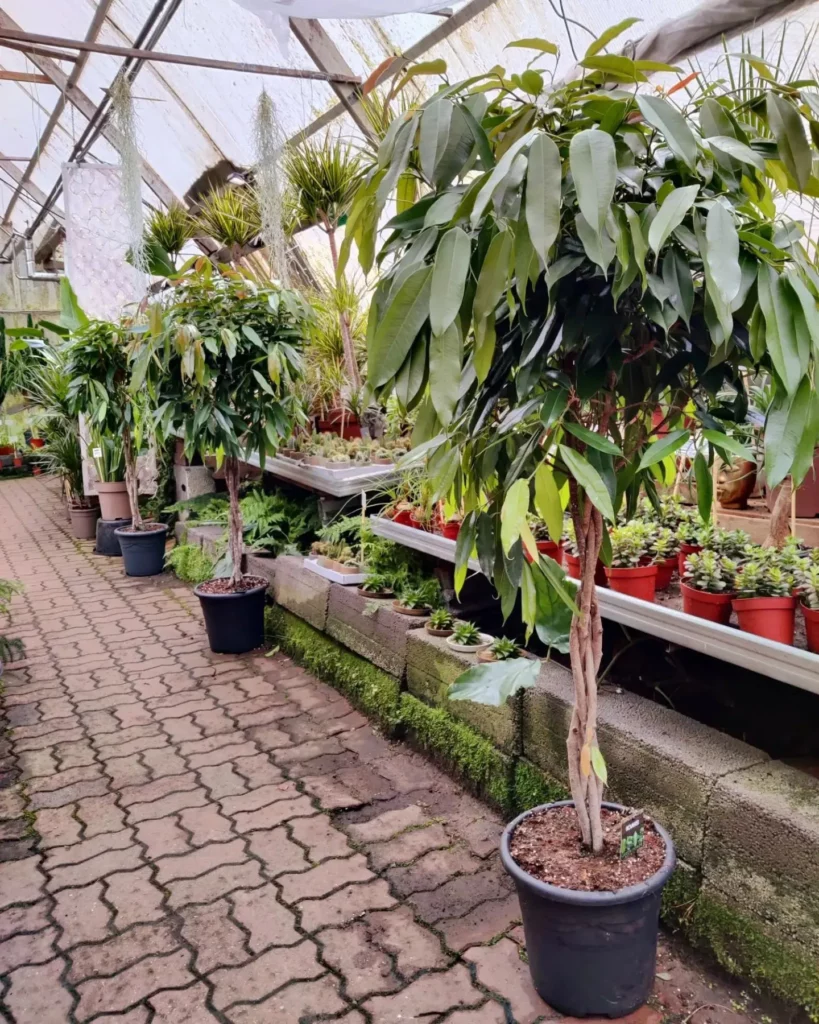
This stunning plant showcases medium green, narrow leaves that resemble the elegance of willow branches. Its lush foliage is thick and eye-catching, adding a touch of luxury to any space.
The Ficus binnendijkii (‘Amstel King’) is known for its robust growth, making it an excellent choice for indoor decoration or as a statement piece in your garden.
To keep your Ficus binnendijkii (‘Amstel King’) thriving, there are a few care tips to keep in mind. This plant prefers bright, indirect light, but it can tolerate medium light conditions as well.
Ensure that it is placed in a spot where it can receive adequate illumination without direct exposure to harsh sunlight.
| Light Requirement: | Bright, indirect light or medium light |
|---|---|
| Watering: | Water when the top 1-2 inches of soil has dried out; avoid overwatering |
| Temperature Range: | 60-85°F |
| Humidity: | Moderate humidity |
Growing Your Ficus binnendijkii (‘Amstel King’)
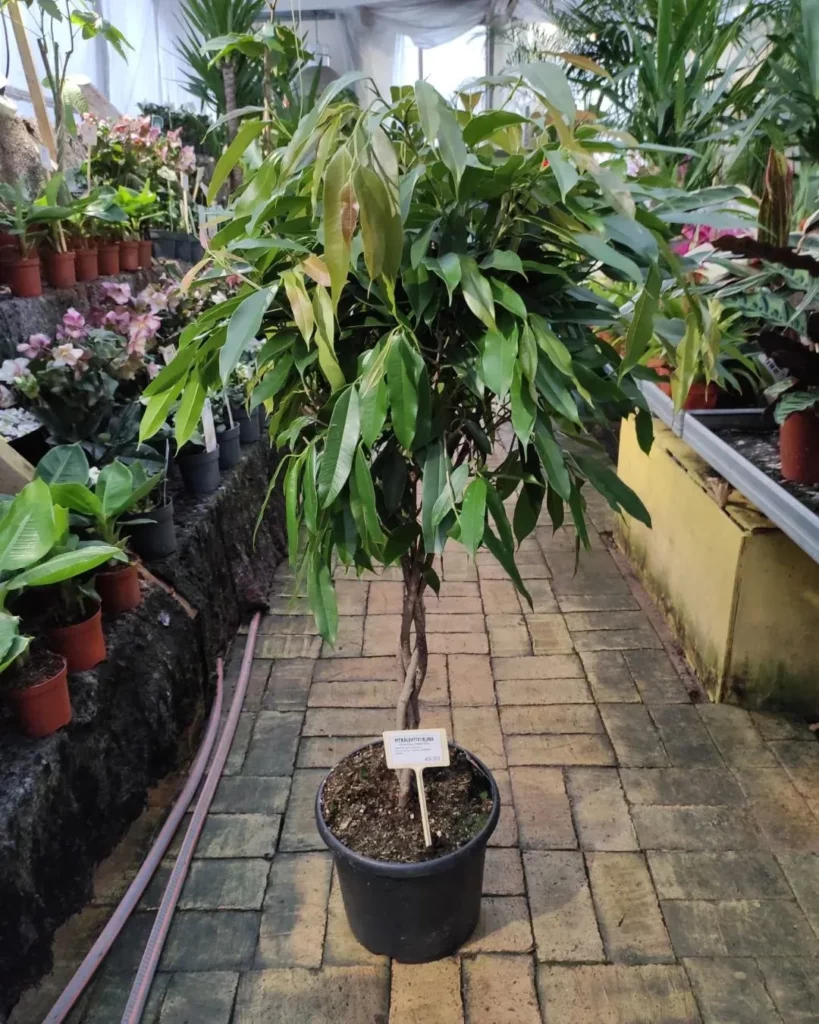
Growing a Ficus binnendijkii (‘Amstel King’) indoors can bring a touch of natural beauty to any space. In this section, we’ll delve into the best practices for nurturing your plant and explore the art of propagation.
Indoor Care
When it comes to indoor care, the Ficus binnendijkii (‘Amstel King’) is a relatively low-maintenance plant. It thrives in bright, indirect light, although it can tolerate medium light conditions as well.
To ensure optimal growth, place your plant near a window that receives filtered sunlight throughout the day.
No products found.
Proper watering is crucial for the health of your Ficus binnendijkii (‘Amstel King’). Allow the top 1-2 inches of soil to dry out before watering, and be cautious not to overwater as it can lead to root rot.
It’s always better to underwater than to overwater, as the plant is more resilient to drought than excess moisture.
Tip: To test if your plant needs watering, insert your finger into the soil. If it feels dry at a depth of 1-2 inches, it’s time to water.
Propagation
If you’re looking to expand your Ficus binnendijkii (‘Amstel King’) collection or share the beauty of this plant with friends, propagation is a fantastic option. The most common method of propagation is through branch cuttings.
To propagate your Ficus binnendijkii (‘Amstel King’), follow these simple steps:
- Select a healthy branch and cut it just below a leaf node.
- Remove the lower leaves, leaving a few at the top.
- Dip the cut end in rooting hormone.
- Place the cutting in a well-draining potting mix.
- Keep the soil consistently moist and provide indirect light.
No products found.
| Plant Care Tips | Propagation Techniques |
|---|---|
| Provide bright, indirect light | Propagate through branch cuttings |
| Water when the top 1-2 inches of soil is dry | Remove lower leaves and dip cut end in rooting hormone |
| Avoid overwatering to prevent root rot | Place cutting in well-draining potting mix |
| Fertilize monthly during active growth | Keep soil consistently moist during propagation |
| Prune during the winter | Provide indirect light and patience for root development |
Quick Care Overview for Ficus binnendijkii (‘Amstel King’)
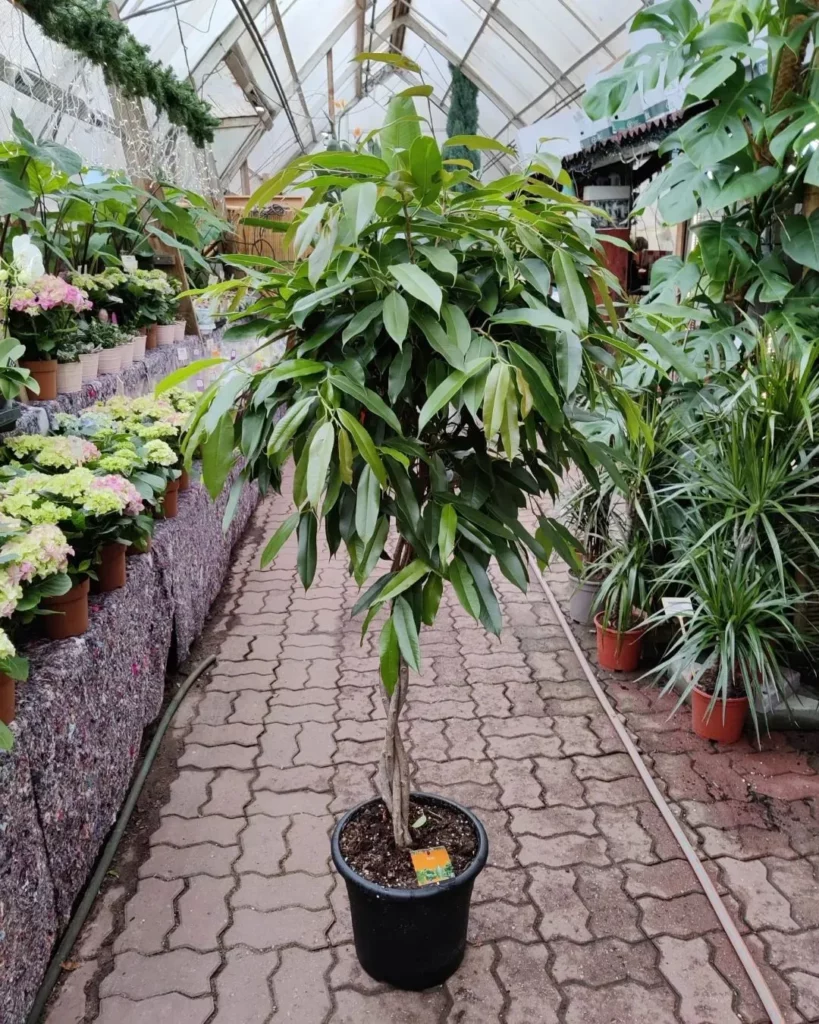
Mastering the care routine for your Ficus binnendijkii (‘Amstel King’) doesn’t have to be complicated. This quick care overview will give you the key points to keep in mind for optimal growth and health.
Light Requirements
The Ficus binnendijkii (‘Amstel King’) prefers bright, indirect light. Place it near a window where it can receive plenty of filtered sunlight throughout the day. However, it can also tolerate medium light conditions if necessary.
Watering Techniques
Water your Ficus binnendijkii (‘Amstel King’) when the top 1-2 inches of soil has dried out. Avoid overwatering, as this can lead to root rot. Allow the water to drain completely from the pot and never let the plant sit in standing water.
Temperature and Humidity
No products found.
Keep your Ficus binnendijkii (‘Amstel King’) in a temperature range of 60-85°F (15-29°C). It thrives in medium humidity levels, but can tolerate lower levels as well. Increase humidity by misting the leaves or placing a humidifier nearby.
Fertilizing and Pruning
Fertilize your Ficus binnendijkii (‘Amstel King’) monthly during its active growth period using a balanced liquid fertilizer. Prune the plant during the winter to maintain its desired shape and encourage new growth.
| Prefers | Avoid |
|---|---|
| Bright, indirect light | Direct sunlight |
| 60-85°F (15-29°C) temperature range | Extreme temperature fluctuations |
| Medium humidity | Low humidity levels |
| Monthly fertilization during active growth | Over-fertilization |
| Pruning during winter | Pruning during active growth |
Light Requirements for Your Ficus binnendijkii (‘Amstel King’)
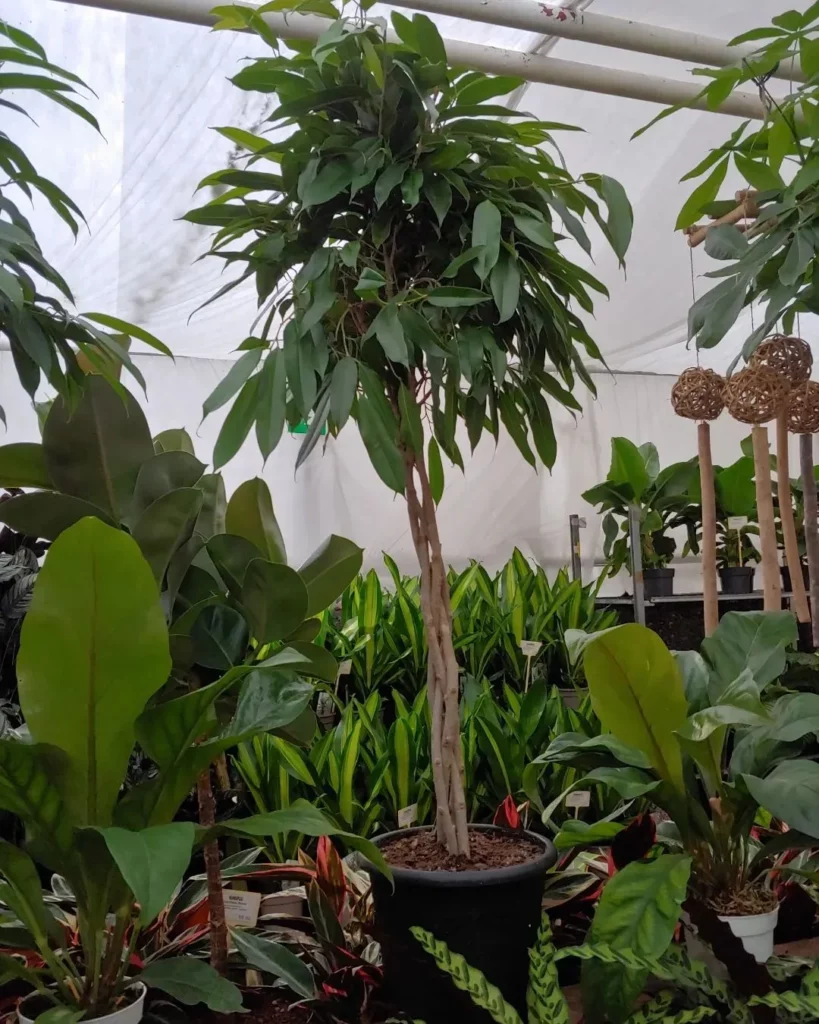
Adequate lighting is crucial for your Ficus binnendijkii (‘Amstel King’) to thrive. In this section, we’ll discuss its light requirements and how to create the perfect environment to encourage healthy foliage.
The Ficus binnendijkii (‘Amstel King’) plant prefers bright, indirect light to maintain its lush green leaves. Place it near a window with filtered sunlight, away from direct exposure to harsh rays.
If you don’t have access to bright natural light, you can use artificial grow lights, such as fluorescent or LED, to provide the necessary light intensity.
It’s important to note that while the Ficus binnendijkii (‘Amstel King’) can tolerate lower light conditions, it may result in slower growth and less vibrant foliage.
No products found.
If you notice your plant becoming leggy or losing leaves, it could be a sign that it’s not receiving enough light.
| Light Requirements | Recommendations |
|---|---|
| Bright, indirect light | Place near a window with filtered sunlight |
| Artificial grow lights | Use fluorescent or LED lights if natural light is limited |
| Rotate your plant | Ensure even sunlight exposure on all sides by periodically turning the container |
| Sheer curtains or blinds | Filter intense sunlight to prevent scorching |
Soil Requirements and Potting
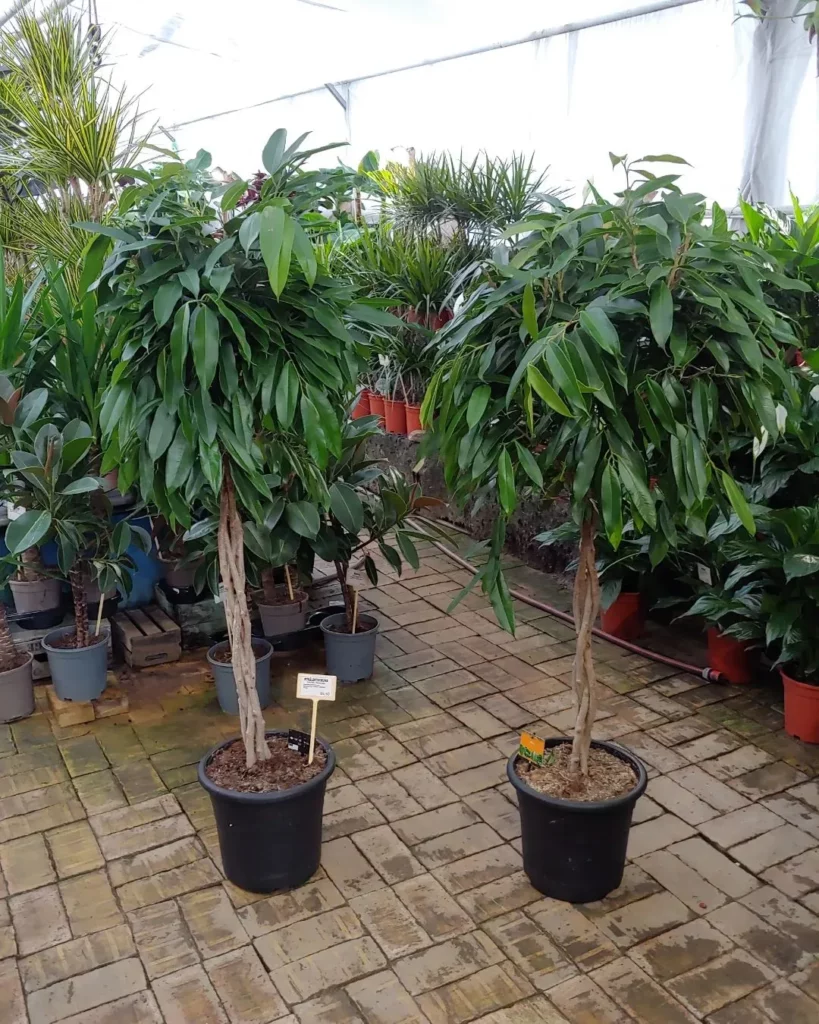
The quality of soil and proper potting play a significant role in the well-being of your Ficus binnendijkii (‘Amstel King’). Discover the ideal soil composition and techniques for potting your plant to ensure optimal growth and health.
| Soil Requirements | Potting Techniques |
|---|---|
| Well-draining soil | Choose a container with enough space for root growth |
| Mixture of potting soil, peat moss, and perlite | Loosen roots before repotting |
| Avoid heavy clay soils | Place a layer of fresh soil at the bottom of the new container |
| Add a layer of gravel or rocks for drainage | Fill in remaining space with potting mix |
Pruning and Shaping Your Ficus binnendijkii (‘Amstel King’)
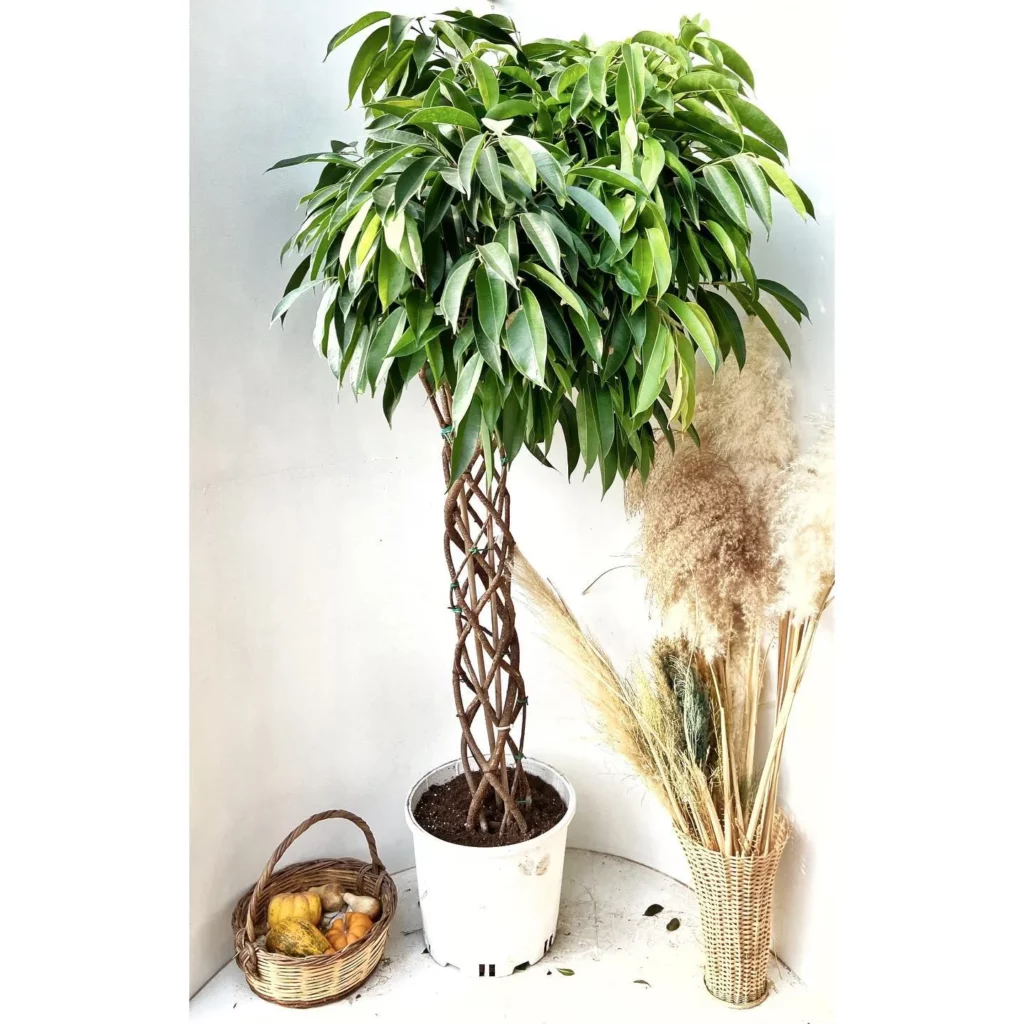
Pruning and shaping your Ficus binnendijkii (‘Amstel King’) not only promotes an aesthetically pleasing appearance but also contributes to its overall health. Let’s explore the techniques and best practices for proper pruning.
When it comes to pruning your Ficus binnendijkii (‘Amstel King’), the first step is to assess the plant’s growth. Look for any dead, damaged, or overgrown branches that need to be removed.
No products found.
Using clean and sharp pruning shears, carefully trim these branches close to the trunk or stem. This will encourage new growth and maintain the plant’s desired shape.
Additionally, you may want to shape your Ficus binnendijkii (‘Amstel King’) to enhance its appearance. This can be done by selectively pruning branches to create a fuller or more symmetrical silhouette.
| Pruning Tips for Ficus binnendijkii (‘Amstel King’) | Benefits |
|---|---|
| Remove dead or damaged branches | Improves overall plant health and appearance |
| Shape the plant by selectively pruning branches | Enhances the visual appeal of the Ficus binnendijkii (‘Amstel King’) |
| Prune during the dormant period | Minimizes stress and allows for optimal regrowth |
| Use clean and sharp pruning tools | Prevents the spread of diseases or infections |
| Make clean cuts just above a leaf node or bud | Promotes new growth in the desired direction |
Temperature and Humidity Requirements for Your Ficus binnendijkii (‘Amstel King’)
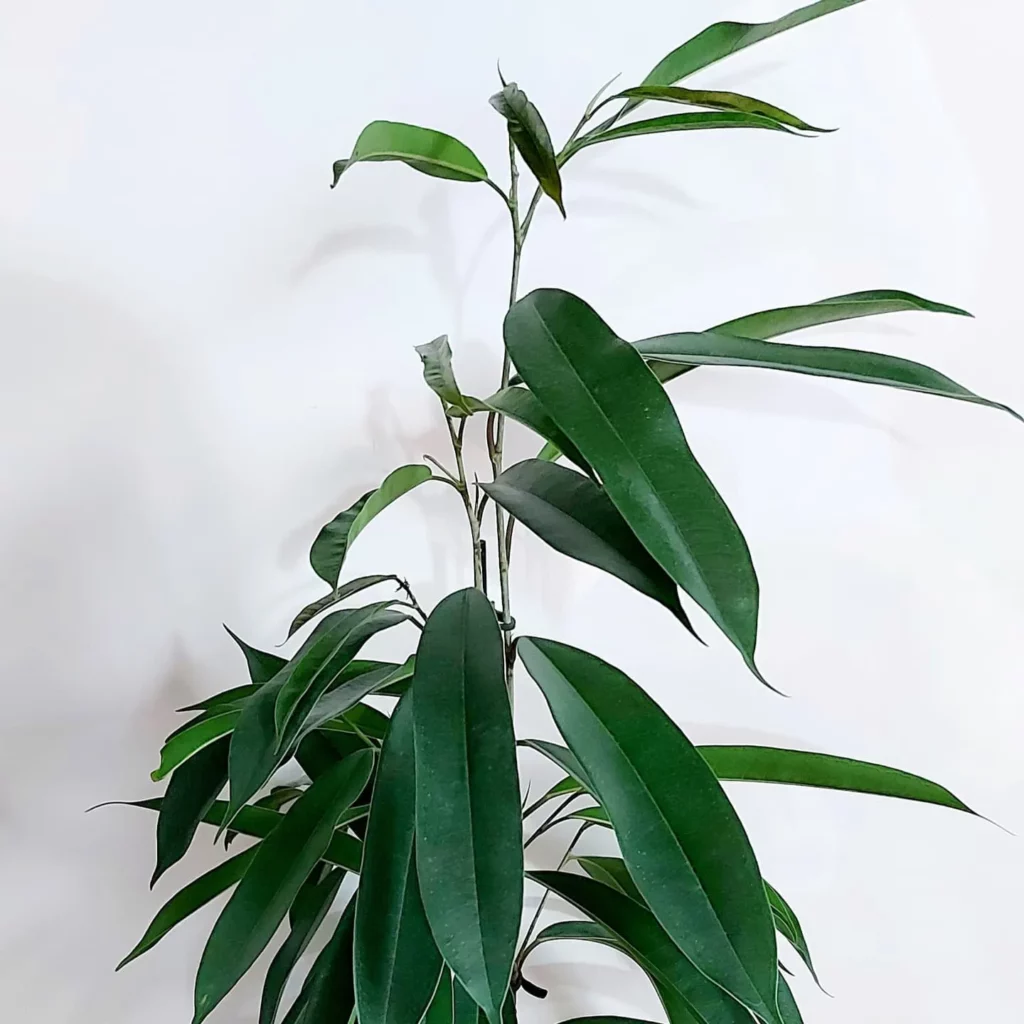
Maintaining the right temperature and humidity levels is vital for the well-being of your Ficus binnendijkii (‘Amstel King’). In this section, we’ll delve into its specific requirements and how to create a suitable environment.
Temperature: The Ficus binnendijkii (‘Amstel King’) thrives in temperatures between 60-85°F. It prefers warmth but can tolerate slightly lower temperatures as long as they don’t drop below 55°F.
No products found.
Avoid exposing the plant to cold drafts or sudden temperature fluctuations, as this can cause stress and affect its overall health. It is important to keep it in a stable environment to ensure optimal growth.
Humidity: While the Ficus binnendijkii (‘Amstel King’) can adapt to different humidity levels, it prefers medium humidity. To create a suitable environment, you can increase humidity by misting the leaves with water regularly or placing a tray filled with water near the plant.
No products found.
This will help to maintain the moisture levels and prevent the leaves from drying out. However, avoid excessive moisture, as it can lead to fungal diseases. Finding the right balance is key for the plant’s well-being.
How to Monitor Temperature and Humidity:
Monitoring the temperature and humidity levels in your Ficus binnendijkii (‘Amstel King’)’s environment is essential for successful care. Here are some ways to keep track:
- Use a thermometer: Place a thermometer near your plant to monitor the temperature. This will give you a clear idea of the conditions it is experiencing.
- Use a hygrometer: A hygrometer is a device that measures humidity levels. By using a hygrometer, you can ensure that the humidity remains within the preferred range for your plant.
Mastering Watering Techniques for Your Ficus binnendijkii (‘Amstel King’)
Watering your Ficus binnendijkii (‘Amstel King’) plant can be a delicate balance. In this section, we’ll explore the best practices and timing for watering to ensure its health and vitality.
First and foremost, it’s essential to understand the watering needs of your Ficus binnendijkii (‘Amstel King’). This plant thrives when the top 1-2 inches of soil has dried out.
Overwatering can lead to root rot, so it’s crucial to allow the soil to dry partially before watering again. To check the moisture level, simply insert your finger into the soil and assess if it feels dry at the top.
Aim to provide consistent moisture to your Ficus binnendijkii (‘Amstel King’) while avoiding waterlogging. When watering, pour water evenly around the base of the plant until it begins to flow out of the drainage holes.
This ensures that the water reaches the roots effectively. Avoid letting the plant sit in standing water, as this can lead to root suffocation and various diseases.
Creating a watering schedule is helpful in maintaining the proper moisture levels for your Ficus binnendijkii (‘Amstel King’). Generally, watering once every 7-10 days is sufficient, but this can vary depending on factors such as temperature, humidity, and the size of your plant.
Observing the plant’s response to watering can guide you in establishing an appropriate schedule.
Watering Tips for Your Ficus binnendijkii (‘Amstel King’):
- Use room temperature water to prevent shocking the roots.
- Ensure proper drainage by using a well-draining potting mix and a container with drainage holes.
- Consider using a moisture meter to accurately monitor the soil moisture level.
- During winter or periods of slower growth, reduce watering frequency to prevent overwatering.
- If you notice yellowing leaves or wilting, it may indicate overwatering or underwatering. Adjust your watering accordingly.
Achieving Fertilizing Success with Your Ficus binnendijkii (‘Amstel King’)
Fertilizing your Ficus binnendijkii (‘Amstel King’) is key to providing it with the nutrients it needs to thrive. In this section, we’ll discuss the best practices for fertilizing and ensuring the success of your plant.
No products found.
When it comes to fertilizing your Ficus binnendijkii (‘Amstel King’), a balanced water-soluble fertilizer is recommended. Look for a fertilizer with a ratio of 10-10-10 or 20-20-20, which signifies the percentages of nitrogen, phosphorus, and potassium, respectively.
This balanced ratio will provide your plant with the necessary nutrients for healthy growth.
During the active growth period, which typically occurs in spring and summer, fertilize your Ficus binnendijkii (‘Amstel King’) once a month. Dilute the fertilizer according to the instructions on the package and water your plant with the solution.
Be sure to apply the fertilizer evenly to avoid over-fertilization, which can lead to salt build-up in the soil.
Pest Control for Your Ficus binnendijkii (‘Amstel King’)
Dealing with pests can be a challenge for any plant owner, and your Ficus binnendijkii (‘Amstel King’) is no exception. In this section, we’ll explore common pests and provide strategies for effective pest control.
The most common pests that infest Ficus binnendijkii (‘Amstel King’) plants include mealy bugs, whitefly, scale, and thrips. These pests can cause damage to the leaves and weaken the overall health of the plant.
To effectively control and eliminate these pests, a multi-pronged approach is recommended.
Firstly, it is important to regularly inspect your Ficus binnendijkii (‘Amstel King’) for any signs of pest infestation. Look for visible pests, sticky residue on the leaves (indicating the presence of whitefly), or small cotton-like masses (indicating mealy bugs).
If you spot any of these signs, isolate the infected plant to prevent further spread.
Next, you can use natural pest control methods such as wiping the leaves with a solution of mild soap and water or using neem oil spray, which acts as a natural insecticide.
For severe infestations, you may need to resort to chemical options, but always follow the instructions on the label carefully and ensure that the product is safe to use on Ficus plants.
No products found.
| Pest | Signs of Infestation | Pest Control Strategies |
|---|---|---|
| Mealy bugs | Visible cotton-like masses on leaves, stems, and soil | Wipe leaves with a mild soap and water solution Use neem oil spray Introduce natural predators such as ladybugs |
| Whitefly | Sticky residue on leaves (honeydew) and small white insects flying around when disturbed | Use yellow sticky traps to catch adult whiteflies Spray with insecticidal soap or neem oil Introduce natural predators such as parasitic wasps |
| Scale | Small, hard shell-like bumps on stems and leaves | Remove scale insects manually with a cotton swab dipped in rubbing alcohol Spray with insecticidal soap or neem oil |
| Thrips | Tiny, slender insects that feed on leaves and flowers, causing silver streaks or distorted growth | Spray with insecticidal soap or neem oil Use yellow or blue sticky traps to catch adult thrips |
Addressing Common Problems with Your Ficus binnendijkii (‘Amstel King’)
Even with the best care, your Ficus binnendijkii (‘Amstel King’) may face some challenges. In this section, we’ll discuss common problems and provide guidance on how to troubleshoot and resolve them.
Pest Infestation: One of the most common issues that Ficus binnendijkii (‘Amstel King’) owners encounter is pest infestation. Pests like mealy bugs, whitefly, scale, and thrip can damage the leaves and hinder the plant’s growth.
To address this problem, it is essential to regularly inspect your plant for any signs of infestation. If you spot any pests, isolate the affected plant and treat it with an appropriate insecticide.
Additionally, maintaining good hygiene and keeping the plant’s environment clean can help prevent future infestations.
Diseases: Gray mold and anthracnose are two diseases that can affect your Ficus binnendijkii (‘Amstel King’). Gray mold often occurs in humid conditions and can cause brown spotting and rot on the leaves.
To prevent gray mold, ensure proper air circulation around the plant and avoid overwatering. Anthracnose, on the other hand, causes dark spots and leaf drop. To combat anthracnose, remove and destroy infected leaves, and reduce humidity levels.
Applying a fungicide can also be beneficial in controlling the disease.
Leaf Drop: Leaf drop is a common problem that can be caused by various factors, such as overwatering, underwatering, temperature fluctuations, or low humidity.
To troubleshoot this issue, assess the plant’s watering schedule and make sure it is receiving adequate but not excessive moisture. Check the temperature and humidity levels in its environment and make necessary adjustments.
Providing a humidifier or placing a tray of water near the plant can help increase humidity. If your Ficus binnendijkii (‘Amstel King’) continues to experience leaf drop despite proper care, consult with a plant expert to determine the underlying cause.
Conclusion
Congratulations! You’ve now mastered the art of caring for your Ficus binnendijkii (‘Amstel King’). With the knowledge gained from this guide, you can confidently nurture your plant and enjoy its lush growth for years to come.
The Ficus binnendijkii (‘Amstel King’) is a large and forgiving plant that can thrive with the right care. Its medium green, narrow leaves give it a distinctive and graceful appearance. This plant prefers bright, indirect light but can also tolerate medium light conditions.
Remember to water it when the top 1-2 inches of soil has dried out, but be careful not to overwater as this can lead to root rot.
To provide optimal conditions, keep the temperature between 60-85°F and maintain medium humidity levels. Fertilize your plant monthly during the active growth period, which will help promote healthy growth. Pruning is best done during the winter months to shape and maintain its desired form.
It’s important to note that the Ficus binnendijkii (‘Amstel King’) is toxic and should be kept away from pets and children. Additionally, be aware of common pests such as mealy bugs, whitefly, scale, and thrip, as well as potential diseases like gray mold and anthracnose.
Regular inspection and prompt action can help keep your plant healthy and pest-free.
When potting your Ficus binnendijkii (‘Amstel King’), ensure the use of well-aerated potting soil and choose a pot that allows for root-bound growth. Propagation can be done through branch cuttings, providing an opportunity to expand your plant collection.
During the summer months, you can consider placing your Ficus binnendijkii (‘Amstel King’) outdoors, but make sure it is not exposed to direct sunlight and temperatures do not drop below 55°F. This plant’s undemanding nature makes it a perfect addition to any home or office space.
Now armed with this comprehensive care guide, you have all the tools you need to create the ideal environment for your Ficus binnendijkii (‘Amstel King’) to thrive. So, go ahead and enjoy the beauty and tranquility that this stunning plant brings to your space.
Make sure to check out our article on Ficus binnendijkii Alii Care Guide. And after reading that Ficus article, check out our article on Ficus maclellandii Banana-leaf Ficus Care Guide.
FAQ
Q: What is the ideal light requirement for the Ficus binnendijkii (‘Amstel King’)?
A: The Ficus binnendijkii (‘Amstel King’) prefers bright, indirect light but can survive in medium light.
Q: How often should I water my Ficus binnendijkii (‘Amstel King’) plant?
A: Water your Ficus binnendijkii (‘Amstel King’) when the top 1-2 inches of soil has dried out, ensuring not to overwater it.
Q: What are the temperature and humidity requirements for the Ficus binnendijkii (‘Amstel King’)?
A: The Ficus binnendijkii (‘Amstel King’) prefers temperatures between 60-85°F and medium humidity.
Q: How often should I fertilize my Ficus binnendijkii (‘Amstel King’)?
A: Fertilize your Ficus binnendijkii (‘Amstel King’) monthly during the active growth period for optimal results.
Q: When should I prune my Ficus binnendijkii (‘Amstel King’)?
A: Prune your Ficus binnendijkii (‘Amstel King’) during the winter to shape and maintain its desired form.
Q: Is the Ficus binnendijkii (‘Amstel King’) toxic to pets and children?
A: Yes, the Ficus binnendijkii (‘Amstel King’) is toxic and should be kept away from pets and children.
Q: What pests can affect my Ficus binnendijkii (‘Amstel King’) plant?
A: Common pests that can affect your Ficus binnendijkii (‘Amstel King’) include mealy bugs, whitefly, scale, and thrip.
Q: What diseases can affect my Ficus binnendijkii (‘Amstel King’)?
A: Diseases such as gray mold and anthracnose can affect your Ficus binnendijkii (‘Amstel King’).
Q: What type of soil should I use for my Ficus binnendijkii (‘Amstel King’)?
A: The Ficus binnendijkii (‘Amstel King’) prefers well-aerated potting soil and should be root-bound in its pot.
Q: How can I propagate my Ficus binnendijkii (‘Amstel King’)?
A: Propagation of the Ficus binnendijkii (‘Amstel King’) can be done through branch cuttings.
Q: Can I place my Ficus binnendijkii (‘Amstel King’) outdoors?
A: Yes, you can place your Ficus binnendijkii (‘Amstel King’) outdoors in summer, as long as it is not in direct sunlight and temperatures do not go below 55°F.
Q: Is the Ficus binnendijkii (‘Amstel King’) an easy plant to care for?
A: Yes, the Ficus binnendijkii (‘Amstel King’) is an undemanding plant that can be easily cared for at home.





